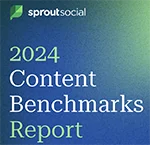 |
| Ebonie Newman |
Across the spectrum of social platforms there are the familiar players like Twitter, YouTube or Facebook, and a complex ecosystem of forums and sites with the power to shape public discourse, derail brand narratives, and trigger crises. Known as “fringe” platforms, the sites are home to some of the savviest social media users on the planet and have become fertile ground for cultivating reputational threats. They manufacture disinformation (the willful creation of false or misleading information) helping to propel the rampant spread of misinformation (the unwitting spread of false information).
At Storyful, we’ve witnessed these communities develop sophisticated strategies that include message testing and distribution tactics across mainstream social platforms to hijack news cycles and injure brand reputations. They understand how to create content that provokes powerful emotions, how to generate engagement with their content and which social channels to leverage for the most reach.
Yet, corporate reputation management teams do not understand the influence of these communities nor the flow of information and content between platforms. Or they lack the tools and resources to protect themselves against the pitfalls. As mis- and disinformation continue to proliferate online, companies will continue to face serious social media-driven threats to their reputations. It’s really a case of when, not if. There’s no excuse for not preparing for the inevitable.
Is your company prepared?
Assessing your company’s digital preparedness is one of the biggest challenges for organizations today. Take Starbucks, for example. After a racially-charged incident at one of their Philadelphia locations last year, fake coupons promising free coffee to African Americans spread across the web. The coupons were part of a coordinated disinformation campaign dubbed Operation Mermaid by alt-right 4Chan users, who hatched the plan to sow further chaos and exacerbate the backlash against Starbucks.
While it was difficult for Starbucks to predict exactly how an antagonistic disinformation campaign would play out, an attack like this was highly likely—and, indeed, had precedent for Starbucks. Disinformation is a feature of the news cycle today and it follows recognizable patterns. Building the muscle in your organization to detect and address disinformation requires being ready for it and scenario-planning for how to address it. The longer you let it linger, the worse it can get.
What is the cost of disinformation?
The New York Times recently reported on the Russian state-sponsored news network, RT America, which coordinated efforts to spread misinformation about 5G. RT America pushed back and others, including respected journalists, have criticized the Times report. Such a chaotic news environment can be very confusing for consumers, and, in turn, very problematic for businesses involved in telecommunications or otherwise reliant on the development of high-speed mobile networks.
Mitigating these issues is possible, and it comes down to the time it takes to address an attack and how fast you understand what exactly is going on. That may require rethinking the toolset you currently have and asking yourself how you get out of the reactive, 24-hour news cycle. If you do not have the capability to understand the full picture in the heat of the moment, you run the risk of responding to the wrong things or worse—feeding the trolls.
What do we do now?
Treating social platforms solely as a distribution channel puts your organization in a defensive position. Fundamentally, social media has to be considered a medium to mine for insight into the risks and opportunities for your reputation. That is the first and best practice. Here are three ways to do that:
Get familiar with the fringes: Smear campaigns often start in communities that have their own chat rooms, forums or platforms. Message boards like 4chan and 8chan represent one hub of extremists that have the know-how to abuse mainstream social platforms. These fringe platforms may only represent a small set of people, but developing an understanding of how they operate is critical to shifting your approach to social media and responding to the threats your company will face.
Understand the flow of information: Malign actors do not target individual platforms but rather move seamlessly between them. It is critical to understand how information flows across the social spectrum to garner a complete view of relevant business conversations.
Develop an eye for authenticity: Studies suggest that, year after year, less than 60 percent of web traffic is human. Spotting real content from the false content intended to distort and derail a narrative takes more than checking the sources. You need to be fluent in the information being shared and even the language being used.
With the rise of fringe platforms’ influence, social understanding is more important than ever in protecting brands’ reputations. By gaining a deep understanding of the conversations happening around their brand and industry, companies can tackle threats to their brands head-on and get ahead of any serious risks.
***
Ebonie Newman is chief commercial officer of Storyful.


 What if companies could harness the fury of online outrage into a force for good? This is precisely where companies can start turning the trolls into brand champions.
What if companies could harness the fury of online outrage into a force for good? This is precisely where companies can start turning the trolls into brand champions. Audiences interacted with brand content far more often on Facebook and Instagram in 2023 than they did via X (formerly Twitter), according to a report that tracked engagement trends across different social networks.
Audiences interacted with brand content far more often on Facebook and Instagram in 2023 than they did via X (formerly Twitter), according to a report that tracked engagement trends across different social networks. Can public relations help counteract the dissension fostered by the power of digital platforms to spread hate, fear and confusion?
Can public relations help counteract the dissension fostered by the power of digital platforms to spread hate, fear and confusion? The number of Americans who get their news from TikTok has quadrupled in the last three years, according to a recent Pew Research Center report.
The number of Americans who get their news from TikTok has quadrupled in the last three years, according to a recent Pew Research Center report.


 Have a comment? Send it to
Have a comment? Send it to 
No comments have been submitted for this story yet.